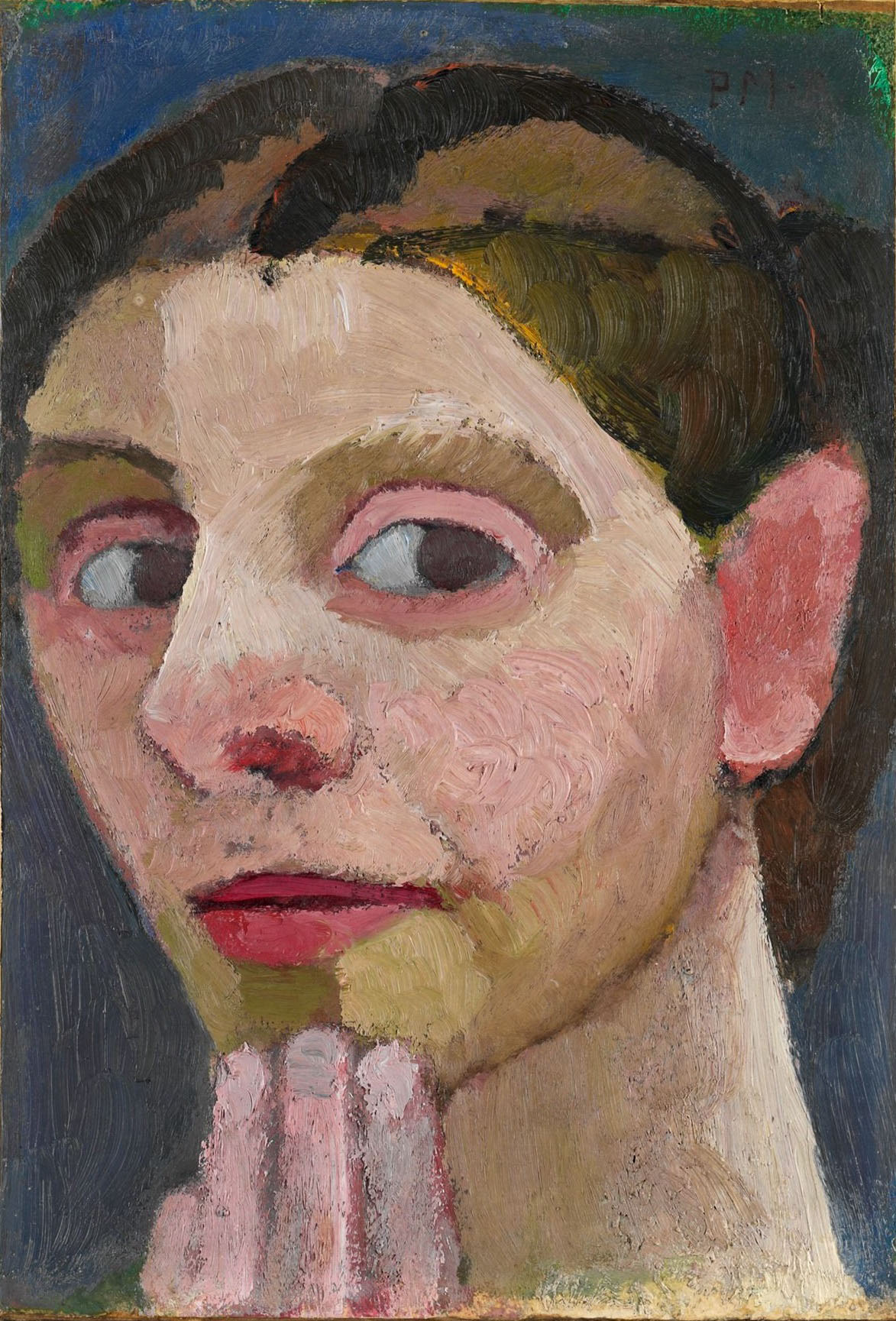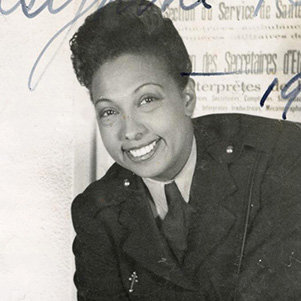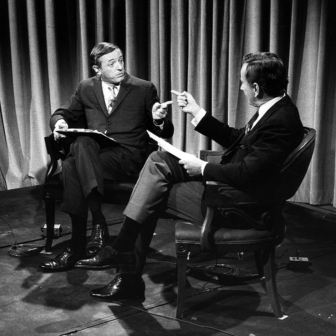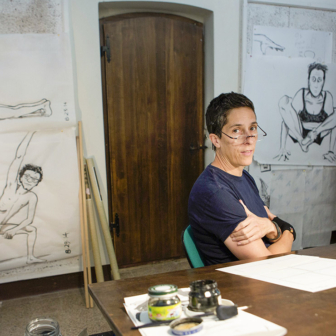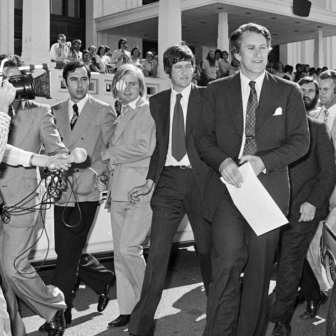Drusilla Modjeska’s new book A Woman’s Eye, Her Art opens with a young German woman screaming “Let it be. There is no other way” at her mother from an omnibus. It is 1899, and the woman is Paula Becker (later Paula Modersohn-Becker), the book’s inspiration and the focus of the first of its three parts. An artist from Bremen “who saw so much and was so little seen,” Modersohn-Becker died in 1907 at just thirty-one. Only after a century or more was she acclaimed, in Modjeska’s words, “as the first modern woman artist.”
The repetition by Modjeska of “firstness” strikes a rare, slightly false note in a book that otherwise sets out to challenge many assumptions of art history, not least in the “great man” version. Rather than attempting to sort and rank, Modjeska situates this young German artist, and all the other artist-women she discusses, within her own time and place, paying especially close attention to her female friendships, her wider artistic circles, and her marriage and its strains.
Modjeska’s focus is as much on social as on inner worlds — or at least she keeps both always in view. Her chapters on Modersohn-Becker are revelatory and deeply moving, illuminating in intimate and affecting ways the artist’s struggle and courage. By doing so, Modjeska contributes to the broader effort to accord Modersohn-Becker, known for her arresting self-portraits, belated recognition as a major artist of the twentieth century.
Indeed, it was an unexpected instance of delayed public acknowledge that impelled Modjeska to write this book. In February 2018, Google celebrated Modersohn-Becker’s birth by showing on its search page a doodle from a self-portrait she had created in 1906. Although Modjeska had “long known I’d write of her one day,” it was on that day that “I went home, cleared my desk and began this book.”
Google’s virtual, ephemeral and bowdlerised version of Modersohn-Becker was part of a conjunction of forces — a “synchronicity” is how Modjeska puts it — that coalesced into a determination to make for herself the space required to commence a new creative project. “Let it be. There is no other way,” she might have repeated as she cleared away whatever obstacles, literal and metaphorical, standing in her way. It’s a fabulously evocative image of a writer at a foundational moment in a project, taking a seemingly simple but deeply symbolic step that signals the commitment and courage to create. Go home. Clear the desk. Begin the book. Let it be. There is no other way.
And it is with perennial questions about how women create within patriarchal structures — with which Modjeska has long been concerned, that A Woman’s Eye, Her Art returns. Throughout her writing life she has explored how and why women live a creative life, the female friendships and wider networks that sustain them, the personal and political contexts in which they work, and the gendered social structures that shape — and limit — their public recognition.
This sustained enquiry commenced with her doctoral thesis, a feminist literary history published in 1981 as Exiles at Home: Australian Women Writers 1925–45, which traced Australian writer-women of the 1930s. Her next foray was the genre-bending The Orchard, part essay, part fiction, published in 1994. Like A Woman’s Eye, Her Art, it pursued in different ways and contexts how the unrelenting proliferation and dominance of stories of (and by) men eclipse — even deny — histories of women’s creativity. In Stravinsky’s Lunch, which followed in 1999, Modjeska brought the lives and histories of Australian artists Stella Bowen and Grace Cossington-Smith into view and into dialogue with each other. A clever dual biography, it is in many ways the closest, in form and focus, to A Woman’s Eye, Her Art.
This time, the canvas is bigger: more artists, more decades, more social, political and artistic movements. Added to Modersohn-Becker are the lives and work of Dora Maar, Lee Miller and the lesser-known Claude Cahun (Lucy Schwob), as well as their circles. Particularly in the second part of the book, which focuses on surrealism, the struggle to keep the stories of men at bay proves difficult; for all her effort to critique a masculinist European art history, the likes of Picasso keep muscling in.
And that might be the point: the binary gendered framing to which Modjeska is committed is not always quite up to the analytical task. This is, to my mind, most apparent in the treatment and discussion of the non-binary, non-conforming Claude Cahun. While Modjeska’s book does a great service in introducing readers to Schwob/Cahun — and indeed to the work of the Jersey historical society that led the preservation of the artist’s archive — Cahun deserves more than the book’s overarching framing of the struggle of artist-women to transcend the “male gaze” can provide.
Modjeska appears aware of this. Returning to Google’s commemoration, she repeats the question that her friend and interlocutor Julie Rrap asked that day: “How would we have reacted if it’d been Claude Cahun on Google doodle?” Their combined, amused reply: “If it had, we said, laughing as we waved goodbye, we’d have been celebrating. For then the world might have really changed.”
Across her books, Modjeska has honed a distinctive way of writing about artist-women, here using “prosopography” as a method. This is well suited to her exploration of the entanglements between the personal and the political, the inner and the social. The result is a peopled, biographically intense, account. We learn about these artists through snippets detailing their friendships and fallings out, their wifedom (adopting Anna Funder’s term), their loyalties, infidelities and separations, as well as through the author’s succinct interpretations of their artistic works.
Indeed, the book is richly illustrated, both in the sheer number of images and in Modjeska’s writerly skills, which show her readers how to look and how to see. All this is presented against the backdrop of a world falling apart as Europe is wracked by two world wars. As a result, the book has the quality both of erudite art history, social commentary, and delicious gossip.
Suitably, then, it is presented like a written equivalent of a visual montage — or an artist’s book — with diamond icons used to signal a shift in focus. Less a sustained historical narrative or a fully resolved theoretical argument, the text reflects Modjeska’s questing and reflexive response to its central question of what it meant to live as a woman and an artist by accumulating details and observations. It is full of snippets, digressions and anecdotes into which are added thoughts and reflections derived from conversations with friends and interlocutors, mainly curators and artists, and well-chosen quotes from scholars. This correspondence between subject and approach invites readers to grapple with the contradictions, challenges and vicissitudes of women’s creative life.
The story Modjeska tells about artist-women in twentieth-century Europe shines a light on courageous individual pursuit as much as the female friendships that nourish it. Modjeska is the author, but throughout she makes clear how much it has been a collective enterprise accompanied by many friends along the way. I’ve already mentioned Julie Rrap as a significant voice in the book. Helen Mueller’s contribution is also significant: she and Modjeska worked side by side translating Modersohn-Becker’s writings not only from German to English but also from English to German to see how earlier translations had skewed their meanings. In this, the book makes a significant contribution to Modersohn-Becker scholarship.
For some of the other artist-women included, their stories are now quite familiar and the project to rehabilitate their reputations as artists “in their own right” already somewhat advanced. This is true, for instance, of Lee Miller and Dora Maar, who have recently been the subject of memoirs, films and exhibitions. Indeed, when reading the sections on Miller’s war photography it was difficult not to conjure an image of her as played by Kate Winslet in Lee (2023). Exhibitions devoted to Dora Maar have sought to release her from the prison of her reputation only as muse to Picasso.
Closer to home, the period of the book’s development and publication has coincided with major revisionist projects dealing with the place of Australian women in histories of modern art, namely the National Gallery of Australia’s Know Her Name exhibition and more recently the Art Gallery of South Australia’s, Dangerously Modern: Australian Women Artists in Europe 1890–1940. Such exhibitions have brought artist-women back into view, along with the question of how they have for so long been overlooked.
A Woman’s Art, Her Eye is a timely complement to this broader field of work. In ways different from the representational and analytical work films and exhibitions can do, Modjeska’s luscious text affords a more expansive view of the intricacies of the lives and struggles of a cohort of artist-women working in Europe across the twentieth century. Driven as it is by her curiosity about women’s creative lives, Modjeska draws us into their work and lives with unstinting generosity. •
A Woman’s Eye, Her Art: Reframing the Narrative through Art and Life
By Drusilla Modjeska | Penguin | $55 | 512 pages
